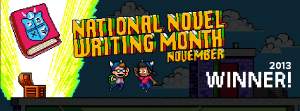
My definition of editing: read through a paragraph, re-write, read out loud, approve, move on, find self-editing source, reread paragraph, see a problem, re-write, approve, move on, and repeat.
I misjudge the time frame for editing my book, by quite a lot. Yet, I’ve learned that strong writing is required for progression, so it will turn out best for me later on.
Since my brain has run on words and their appropriate order for a while, I thought I would share some things I’ve learned.
1. Clean sentences move the story forward.
Most often people advise to shorten sentences. However, I find it more helpful to say clean your sentences. A clean straightforward sentence gives all the information while using strong independent stand-alone words. This can be achieved with both short and long sentences.
For example:
Jenny is so happy to be running down the street with the crisp warm sun beating down on her heard and all of the other runners keeping pace beside her.
The sentence gives pertinent information, but several words muddy the point. Trimming words moves the reader along faster and makes the point sooner.
I might change it to:
Jenny ran beside her competitors, a smile stretched her lips, her eyes squinted, head down, shielded from the warm determined sun.
It isn’t much shorter, but it gives the same information in a more concise manner that shows the action.
2. Reduce metaphors and similes
I read a book once that had so many metaphors and similes I wanted to trash it instead of finish it. After multiple metaphor riddled paragraphs, I figured the purpose could only be to up the word count, because they didn’t enhance the story.
Metaphors should be used to clarify unusual experiences most people can’t relate to, or to make something more specific.
3. Overused words
Here are a few such words: literally, pretty, interesting, beautiful, ridiculous, awesome, great, good, seriously, nice, like, and feel.
I’ve included every single one in my writing, which has tacked on time and effort in this editing phase. These words are useful placeholders, but they are vague words most readers pass over. Words that can mean something different to every person won’t express the character’s experience. However, they do make for more authentic dialog when used sparingly.
4. Telling words and phrases
Some include: start/began, knew, could see, the sound of, heard, felt, and realize.
It’s better to state the action instead of telling about the action.
For example:
Brook started to walk when she heard the sound of a car, and she realized it might hit her.
It’s more dramatic to cut the telling words.
A car’s engine roared. Brook sprinted toward the building. Her feet hit the curb, as a forceful wind passed behind her. The car tire’s squealed to a stop.
5. Redundancies
Most redundancies are common words and phrases, so they’re difficult to spot.
A short list includes: stand up, sit down, lay flat, jump up, turn over, end result, enter in, and repeat again.
Once we cut the redundancies, our sentences are cleaner and more efficient.
I hope my list has helped. I would love to read your comments and thoughts about your editing experiences.
Thanks for reading my blog!
A.G. Zalens
 I’ll just say I’m resolved to edit my novels and move on to publication. Those are lofty enough resolutions for me.
I’ll just say I’m resolved to edit my novels and move on to publication. Those are lofty enough resolutions for me.








